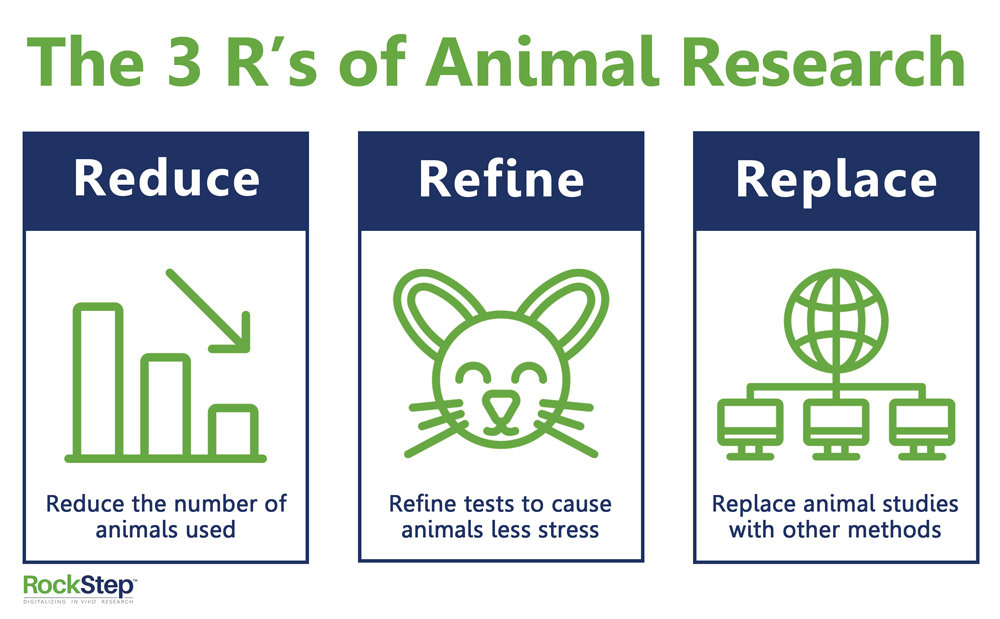In the evolving landscape of scientific inquiry, the ethical ramifications of using animals in research have sparked intense debate. As the world grapples with the complexities of progress versus ethics, the principles underpinning humane research methodologies emerge as critical. Specifically, the 3R principles—Replacement, Reduction, and Refinement—serve as beacons of guidance for researchers striving to minimize animal suffering. These principles beckon us to reimagine the methodology employed in laboratories and sanctuaries alike, encouraging a paradigm shift towards compassion without compromising the integrity of scientific discovery.
Replacement stands as the first pillar of the 3R principles, a clarion call for scientists to explore alternatives to animal testing. This principle invites researchers to consider a myriad of innovative avenues that can supplant the necessity for animal subjects. In an age defined by technological advancement, one can liken the shift from traditional animal models to advanced computational simulations and in vitro experiments as akin to replacing the quill with a typewriter—a technological renaissance that enhances efficiency while safeguarding sentient beings. By leveraging cellular cultures, organ-on-a-chip technologies, and sophisticated computer models, scientists can unveil the mysteries of biological processes without the ethical encumbrance animal testing entails.
Moreover, the burgeoning field of biotechnology beckons a new era of replacement techniques. For instance, the development of human induced pluripotent stem cells (iPSCs) has revolutionized our approach to studying human diseases while eschewing animal subjects. By creating disease models that mirror human conditions, researchers not only advance scientific understanding but also sidestep the moral dilemma of inflicting suffering on animals. Thus, the exploration of replacement methodologies ultimately fosters a more humane scientific community, aligning our quest for knowledge with our ethical responsibilities.
The second pillar, Reduction, emphasizes the necessity for minimizing the number of animals used in research while maximizing the data obtained from each subject. This principle echoes the age-old adage of efficiency, urging scientists to work smarter rather than harder. Imagine a finely tuned orchestra, where every instrument plays a pivotal role, contributing to the overall harmony of the performance. Similarly, by adopting robust experimental designs and statistical methodologies, researchers can significantly reduce the need for animal subjects without sacrificing the quality or reliability of their findings.
To achieve this, researchers are increasingly encouraged to employ advanced experimental designs such as the use of fewer but more informative samples or relying on multi-variable analyses. By utilizing statistical models that optimize the use of available data, the scientific community can shift its focus from sheer numbers to the quality and significance of research outcomes. This approach fosters a methodological maturity that not only respects the dignity of the animals involved but also enhances the robustness of scientific claims.
A poignant illustration of the Reduction principle can be drawn from the field of toxicology. Traditionally, vast numbers of animals were subjected to toxicological testing, leading to significant ethical concerns. However, with the advent of pioneering technologies such as high-throughput screening and predictive toxicology, researchers can glean vital safety information rapidly and with fewer animal subjects. As such, the imperative to employ Reduction principles becomes not just a moral obligation but a catalyst for scientific excellence.
As we navigate the intricate pathways of research, Refinement serves as the final principle of the 3Rs, advocating for the enhancement of animal welfare and the alleviation of pain and distress. The concept is reminiscent of a skilled craftsman who meticulously smoothes the rough edges of a masterpiece until it shines with moral and aesthetic brilliance. In research, refinements can manifest through improved housing conditions, enriched environments, and the provision of analgesics or anesthetics during procedures.
Implementing humane endpoints is another critical aspect of Refinement. By establishing clear criteria for discontinuing studies when animals experience undue suffering, researchers uphold their moral responsibility, ensuring that the animals involved are treated with respect and compassion. This proactive stance protects the subjects while simultaneously enhancing the quality of data, as stressed or suffering animals often yield unreliable results.
Furthermore, education plays a quintessential role in embracing the Refinement principle. Instituting rigorous training programs for researchers not only equips them with the technical know-how of research methodologies but also instills a profound ethical framework. Knowledge about the biological and psychological needs of animals can inspire researchers to create protocols that prioritize animal welfare, reflecting a commitment to both scientific integrity and humane practices.
In conclusion, the integration of the 3R principles into scientific research serves as a clarion call for a more compassionate approach to inquiry. As researchers delve into the depths of knowledge, the balancing act between scientific progress and ethical responsibility should not be overlooked. The symphony of Replacement, Reduction, and Refinement ushers in a new era of research—a paradigm where the pursuit of knowledge marries seamlessly with the commitment to alleviate animal suffering. By embracing these principles, the scientific community cultivates a culture of respect and empathy, ensuring that the quest for answers does not come at a harrowing cost to sentient beings. As stewards of this planet, it is our duty to shine a light on these practices, heralding a future where science evolves hand-in-hand with ethical considerations, ultimately leading to a more humane world for all.







